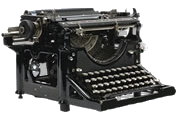The O.S.S.
(Collier’s Magazine, 1945)
This was more than likely the very first mainstream magazine article to address the vital contributions that the Office of Strategic Service made in beating the Axis powers. It appeared on the newsstands just about six weeks after the end of the Second World War and lists various key operations and triumphs that had heretofore been secret.
In 1940 OSS chief Donovan wrote an article about the German-American Bund, Click here to read it.
